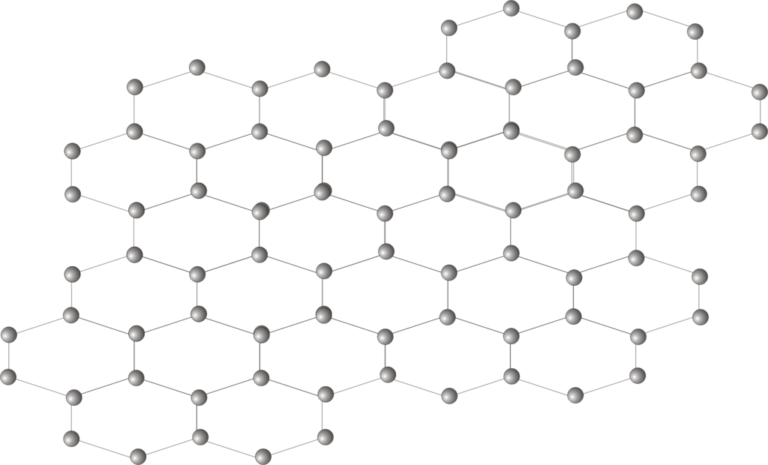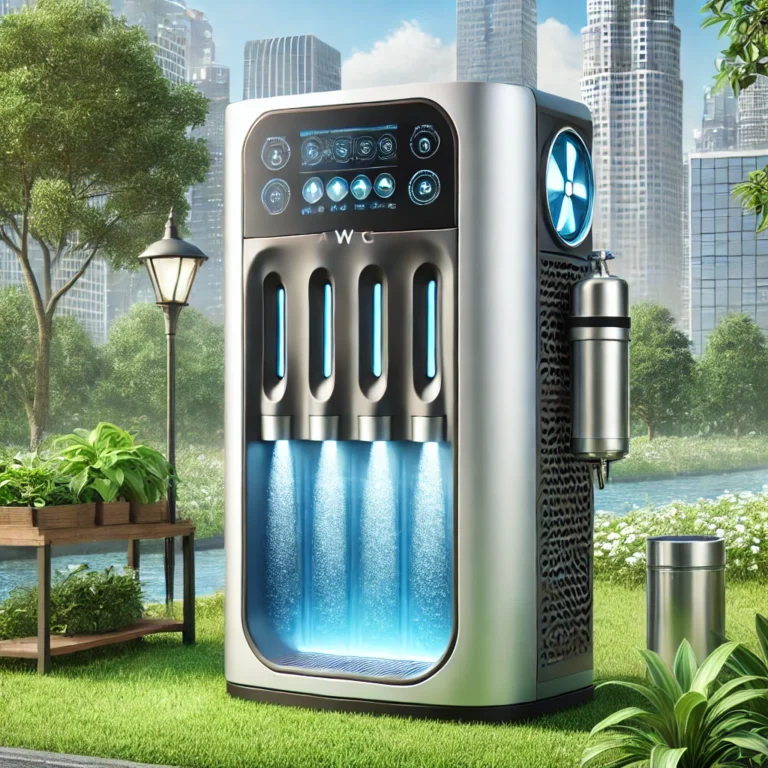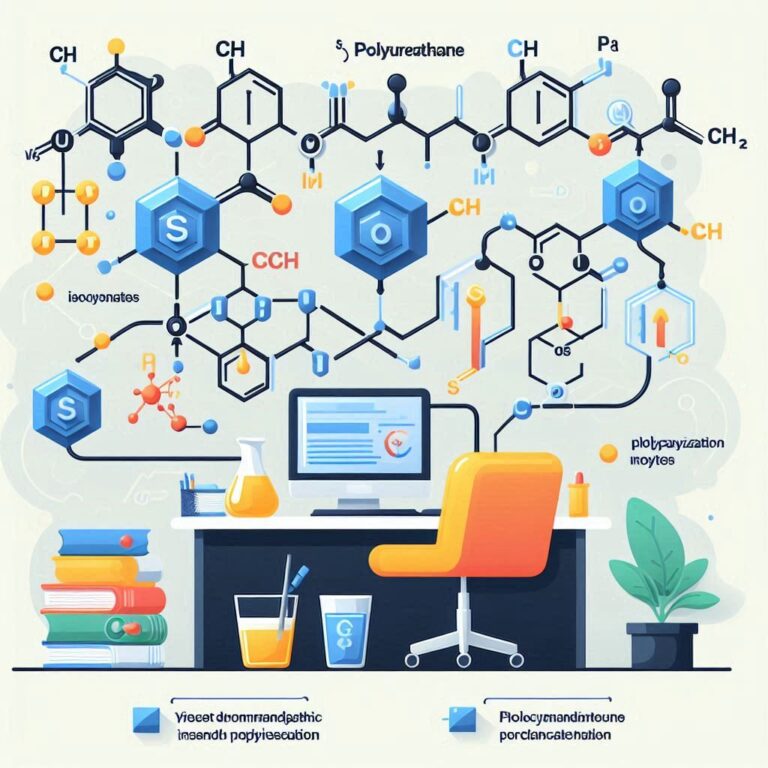Introduction: Why the “Green” in Nanotechnology Matters
In the 21st century, we face two urgent realities: rapid technological progress and escalating environmental crises. Air pollution, water scarcity, climate change, and resource depletion are no longer distant threats—they are today’s challenges. Traditional nanotechnology has already shown its potential to revolutionize energy, medicine, and materials science. Yet, it often comes with hidden costs: energy-intensive synthesis, toxic by-products, and long-term ecological risks.
This is where green nanotechnology comes in. So, what is green nanotechnology? At its core, it is the science of designing, producing, and applying nanomaterials in ways that are environmentally friendly, energy-efficient, and socially responsible. Unlike conventional methods, green nanotech emphasizes biodegradable materials, safer solvents, renewable resources, and minimal waste. It represents a fusion of two powerful movements: cutting-edge nanoscale science and sustainable innovation.
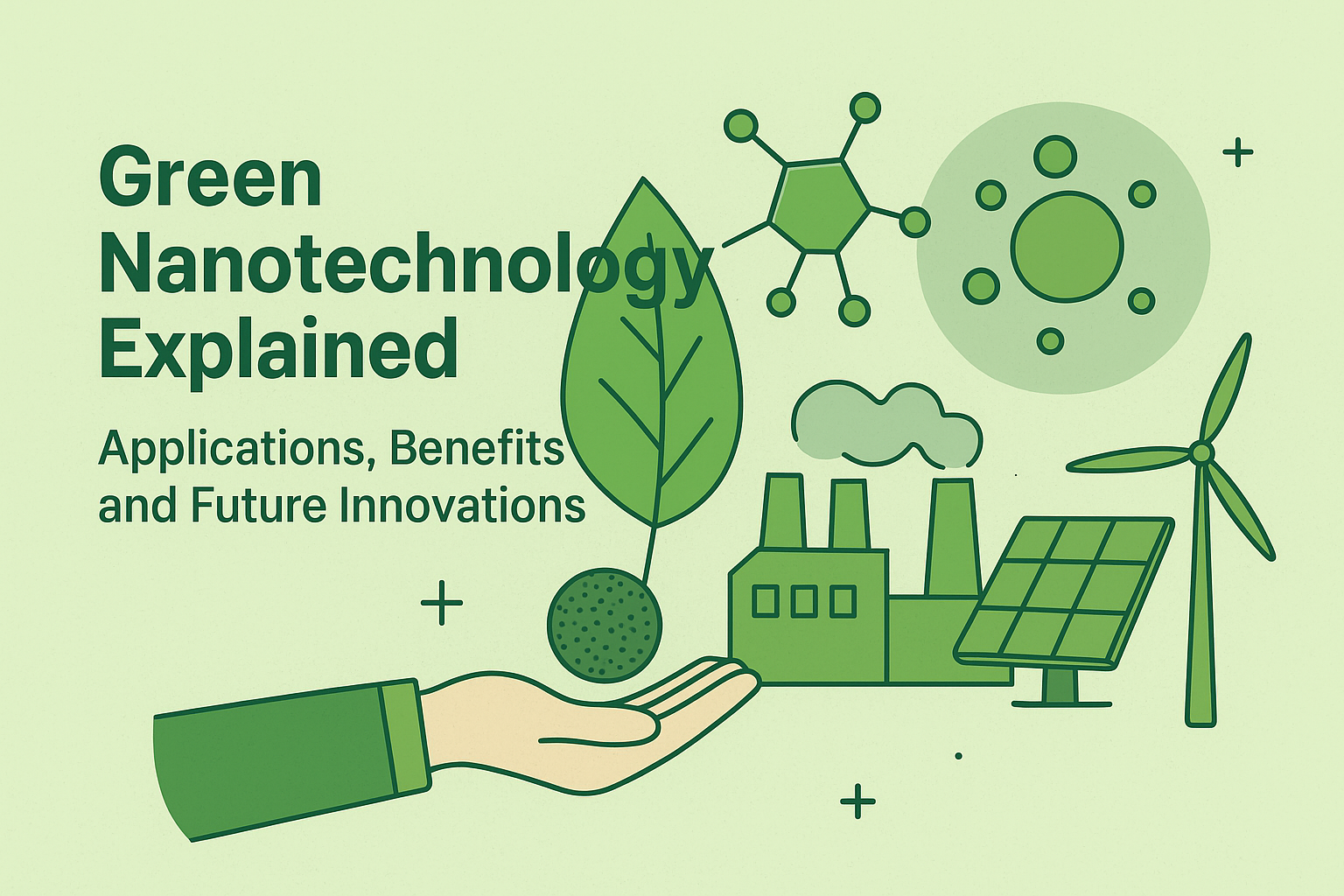
For example, instead of using toxic chemicals to produce nanoparticles, researchers are experimenting with plant extracts, bacteria, and even algae as natural “nanofactories.” This shift not only reduces hazards but also makes production scalable and cost-effective in the long run.
In simple terms, sustainable nanotechnology is about unlocking the incredible potential of the nanoscale while ensuring that solutions don’t create new problems for the planet. It’s not just an upgrade to traditional nanotech—it’s a paradigm shift toward a cleaner, safer, and more resilient future.
By exploring this field, we’ll see how the application of green nanotechnology is already shaping water purification, renewable energy, medicine, and agriculture—and why it may be one of the most important scientific directions of the coming decades.
Science Behind It: How Green Nanotechnology Works
To understand the impact of this field, we must first look at how sustainable nanotechnology works at the material and process level.
Types of Eco-Friendly Nanomaterials
Green nanotechnology often uses:
- Biodegradable nanoparticles made from polymers that naturally break down in the environment.
- Carbon-based nanomaterials like graphene, carbon nanotubes, and carbon dots—created using plant matter or biomass instead of fossil fuels.
- Bio-derived nanomaterials, synthesized with extracts from plants (such as neem, aloe vera, or tea leaves) or even microorganisms that act as natural reducing agents.
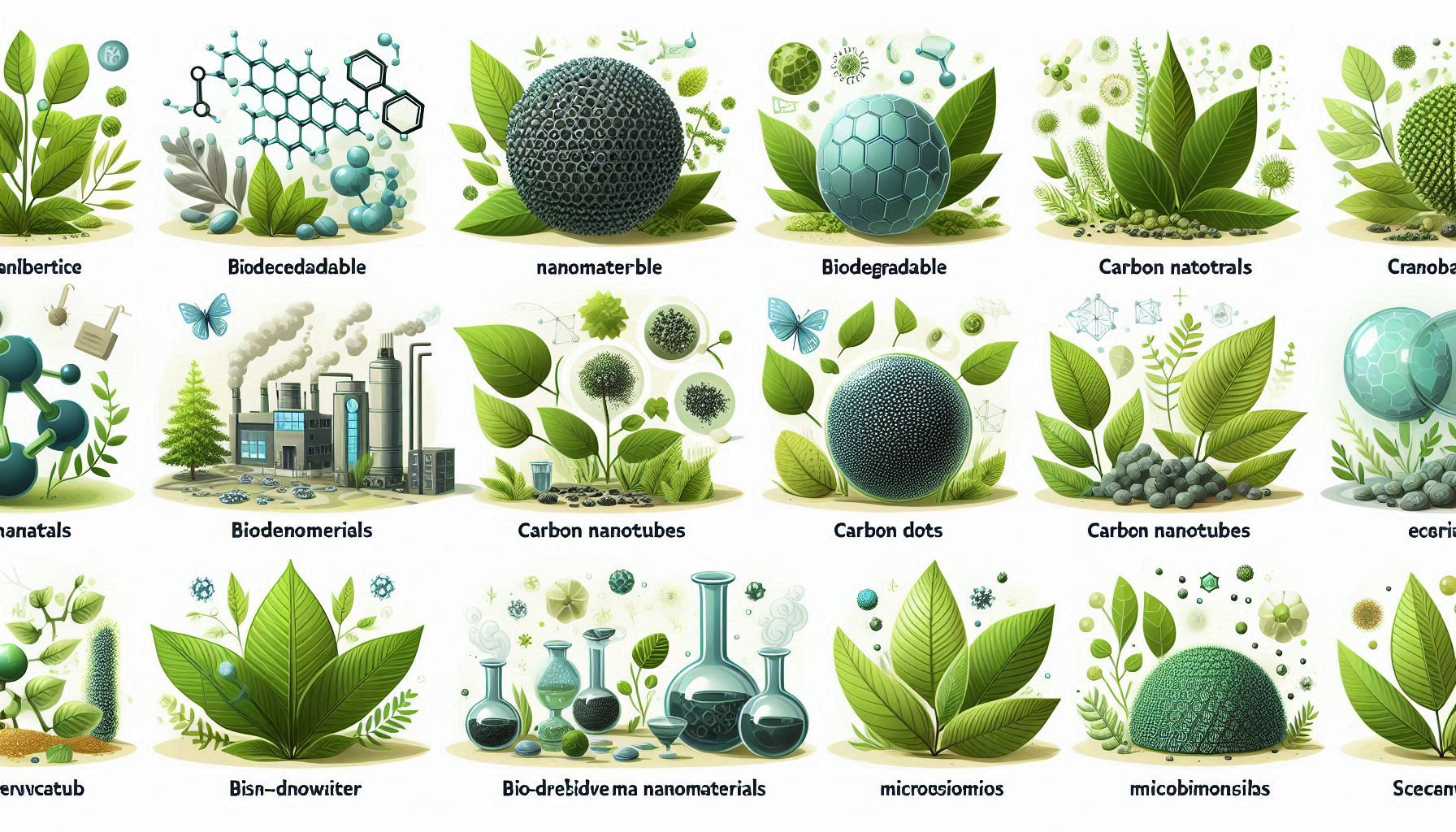
Green Design Principles
The science is guided by a set of “green chemistry” rules applied to nanoscale synthesis:
- Energy efficiency – replacing high-temperature or high-pressure reactions with hydrothermal, microwave, or sol-gel methods that save energy.
- Non-toxic solvents – using water, ethanol, or natural extracts instead of hazardous chemicals.
- Recycling and reusability – ensuring catalysts and nanoparticles can be recovered and reused rather than discarded.
- Minimal by-products – processes are designed to avoid waste accumulation.
Lifecycle Thinking
Another cornerstone of sustainable nanotechnology is the idea of evaluating an entire product’s life:
- Sourcing raw materials sustainably.
- Manufacturing with reduced carbon footprint.
- Application in ways that minimize harm.
- Disposal or recycling at the end of its use to prevent toxic buildup in ecosystems.
This holistic approach separates green nanotechnology from older practices. Instead of focusing only on performance, it accounts for environmental and social consequences at every stage.
By combining biological inspiration, smart chemistry, and lifecycle awareness, researchers aim to make nanotechnology not just powerful, but also planet-friendly. In this way, the science behind green nanotechnology demonstrates that innovation and sustainability can advance hand in hand.
Applications of Green Nanotechnology in Environment & Clean Energy
Green nanotechnology applications are revolutionizing the way we tackle environmental challenges and transition to clean energy solutions. In the environmental sector, green nanotechnology in environment has shown remarkable potential for water purification, pollutant capture, and the development of advanced nano-membranes. Nano-enabled membranes, for example, can selectively remove heavy metals, pathogens, and organic pollutants from water sources with higher efficiency than conventional filters. Iron nanoparticles (nano-iron) are widely used in wastewater treatment to degrade toxic compounds, offering an eco-friendly alternative to traditional chemical methods. Similarly, titanium dioxide (TiO₂) nanoparticles are effective in air purification systems, catalyzing the breakdown of airborne pollutants and volatile organic compounds, thus improving urban air quality.
In the realm of clean energy, green nanotechnology applications are driving the development of next-generation renewable technologies. Nano-coatings for solar panels enhance light absorption and reduce energy loss, while perovskite solar cells, engineered at the nanoscale, offer higher efficiency and lower production costs compared to traditional silicon-based panels. Moreover, nanostructured materials in energy storage, such as nano batteries and supercapacitors, enable faster charging, higher energy density, and longer lifespan, supporting the widespread adoption of renewable energy systems.
Real-world applications further highlight the transformative impact of green nanotechnology in environment / clean energy. For instance, nano-iron particles are employed to remove nitrates and heavy metals from industrial wastewater, demonstrating an environmentally sustainable approach to pollution control. TiO₂-based photocatalysts are used in air purification units to degrade pollutants using sunlight, representing a practical implementation of green nanotechnology principles.
The application of green nanotechnology not only improves environmental protection and energy efficiency but also aligns with global sustainability goals. By integrating nanoscale solutions into water, air, and energy systems, industries and municipalities can reduce ecological footprints while enhancing performance. These advancements underscore the importance of continued research and investment in green nanotechnology applications to meet the growing demands of a cleaner, more sustainable future.
Applications in Medicine & Agriculture
Green nanotechnology applications extend far beyond energy and environmental solutions, transforming medicine, agriculture, and even cosmetics. In medicine, biodegradable nano drug delivery systems allow precise targeting of medications, reducing side effects and improving therapeutic outcomes. Antimicrobial nanocoatings are used on medical devices and hospital surfaces to prevent the spread of infections. Additionally, nanomaterials are being developed for cancer treatment, enabling controlled drug release directly at tumor sites and enhancing treatment efficacy while minimizing damage to healthy tissues.
In agriculture, the application of green nanotechnology is fostering sustainable practices. Nano-fertilizers deliver nutrients more efficiently, reducing runoff and environmental contamination, while nano-pesticides target pests with precision, minimizing chemical use and preserving beneficial organisms. These innovations help increase crop yields sustainably, supporting global food security in an eco-friendly manner.
Cosmetics also benefit from green nanotechnology applications, particularly through the use of eco-friendly nanocapsules. These nanostructures allow slow-release delivery of active ingredients in skincare products, improving efficacy and reducing the need for synthetic preservatives. By employing biodegradable and non-toxic materials, cosmetic formulations become safer for both consumers and the environment.
Overall, green nanotechnology applications in medicine, agriculture, and cosmetics illustrate how nanoscale innovations can drive sustainability while enhancing performance and safety. By bridging efficiency with eco-conscious design, these applications represent a critical step toward a future where technology and environmental stewardship go hand in hand.
Case Studies: Real-World Examples
The application of green nanotechnology is no longer confined to laboratories; numerous real-world implementations demonstrate its transformative potential across industries. In rural areas, water purification systems have incorporated green nanomaterials to provide safe drinking water. For example, nano-iron and silver nanoparticles are used in low-cost filters to remove bacteria, heavy metals, and other contaminants, providing a scalable solution for communities lacking access to clean water.
In the renewable energy sector, solar projects are increasingly integrating nano-coatings to improve efficiency and durability. These nano-coatings reduce light reflection, enhance energy absorption, and extend the lifespan of photovoltaic panels. Several commercial solar farms have reported noticeable increases in energy yield after implementing nanoscale surface treatments, showcasing the practical value of green nanotechnology in environment / clean energy applications.
Startups are also exploring sustainable packaging solutions through biodegradable nanomaterials. By developing nano-packaging that decomposes naturally without leaving toxic residues, these companies are reducing plastic waste while maintaining product integrity and shelf life. This approach exemplifies the application of green nanotechnology in promoting circular economy practices.
In agriculture, field trials with nano-fertilizers and nano-pesticides have shown promising results. Crops treated with nano-fertilizers exhibit enhanced nutrient uptake and increased yields, while minimizing environmental runoff and chemical usage. These trials highlight how nanoscale innovations can improve agricultural efficiency sustainably, reducing both economic and ecological costs.
Collectively, these case studies illustrate how the application of green nanotechnology is delivering practical, scalable solutions across water, energy, agriculture, and packaging sectors. By bridging innovation with sustainability, these initiatives demonstrate a clear pathway for integrating nanotechnology into everyday solutions while addressing pressing environmental challenges.
Benefits vs Risks: What to Watch Out For
Sustainable nanotechnology offers significant benefits across industries, but it is essential to balance innovation with caution. Among the key advantages, green nanotechnology enables cleaner production processes by reducing the use of harmful chemicals and minimizing waste generation. Energy systems, water treatment, and agricultural practices all benefit from higher efficiency and resource optimization. For example, nano-enhanced solar panels capture more sunlight, while nano-fertilizers deliver nutrients more effectively, reducing environmental impact.
However, there are inherent risks that must be carefully managed. Some nanoparticles can exhibit toxicity to humans, animals, and aquatic life if released into the environment in uncontrolled quantities. Long-term accumulation of nanomaterials in soil and water could potentially disrupt ecosystems, and current regulatory frameworks are still evolving to address these emerging challenges. Safety protocols, proper disposal methods, and thorough environmental assessments are crucial to mitigate these risks.
By weighing the benefits against potential hazards, industries can adopt sustainable nanotechnology responsibly. Policymakers, researchers, and businesses must collaborate to establish guidelines that ensure safety while promoting innovation. When applied thoughtfully, sustainable nanotechnology can drive efficiency, reduce environmental footprints, and create eco-friendly solutions that support a cleaner, healthier planet.
Future Trends & Innovations
The future of green nanotechnology in environment promises groundbreaking innovations inspired by nature and powered by advanced computational tools. Bio-inspired nanomaterials are at the forefront of this evolution. For instance, lotus-leaf-inspired coatings exhibit self-cleaning properties, allowing surfaces to repel water and contaminants naturally. Similarly, synthetic spider silk nanostructures combine exceptional strength with lightweight properties, offering potential applications in construction, textiles, and medical devices.
Emerging carbon capture nanotechnologies aim to mitigate climate change by efficiently trapping and storing atmospheric CO₂. AI-driven design of green nanomaterials accelerates discovery, allowing researchers to predict material properties, optimize functionality, and reduce trial-and-error experimentation. These technologies can lead to highly efficient catalysts, membranes, and energy storage systems, further enhancing sustainability in industrial and environmental processes.
Despite these advances, scaling up nanotechnology from laboratory to industrial applications remains challenging. Green manufacturing processes must ensure eco-friendly production, minimize waste, and maintain cost-effectiveness. Addressing these challenges will be critical for integrating future innovations into real-world environmental and energy solutions.
Green nanotechnology in environment is poised to reshape industries, combining inspiration from nature with cutting-edge science to deliver sustainable, high-performance solutions. Continued research, investment, and collaboration across disciplines will drive the next wave of impactful applications.
How Students & Researchers Can Get Involved
Students and researchers play a crucial role in advancing sustainable nanotechnology. Universities and research labs worldwide offer opportunities to explore nanoscale solutions for environmental, medical, and industrial challenges. Specialized datasets, open-access eco-nano journals, and online resources provide valuable guidance for designing experiments, analyzing data, and staying updated with emerging trends.
For those starting out, simple, entry-level experiments can introduce core principles of green nanotechnology. Plant-based nanoparticle synthesis, for example, uses eco-friendly extracts from leaves, fruits, or roots to produce nanoparticles for water purification, antimicrobial coatings, or agricultural applications. These projects allow hands-on learning while emphasizing sustainability and minimal environmental impact.
Participation in workshops, internships, and collaborative research programs can further deepen understanding and provide practical experience. By engaging early with sustainable nanotechnology, students and young researchers can contribute to real-world solutions, develop innovative applications, and help shape a greener, more sustainable future.
Conclusion: Green Nanotechnology’s Role in the Future
In simple terms, green nanotechnology is the science of using nanoscale materials responsibly to benefit both humans and the environment. Its applications—from water purification and renewable energy to medicine and agriculture—demonstrate tremendous potential, yet risks like toxicity and regulatory gaps require careful management. Balancing innovation with sustainability, scaling solutions responsibly, and implementing proper regulations are essential to fully realize its promise. With ongoing research and sustainable practices, the application of green nanotechnology can play a pivotal role in building a cleaner, more efficient, and eco-friendly future.
🌱 Interested in more breakthroughs in sustainable science and materials? Don’t miss these related reads:
-
🔹 What is Graphene? A One-Atom-Thick Marvel – Discover why this wonder material is reshaping electronics, energy, and medicine.
-
🔹 Graphene Biosensors Explained – How ultra-thin sensors are transforming healthcare diagnostics.
-
🔹 Green Metals: The Future of Sustainable Mining & Eco-Friendly Manufacturing – Can mining really go green? Explore the innovations making it possible.
-
🔹 Liquid Crystal Elastomers – The smart materials powering soft robotics and futuristic devices.
👉 Check them out to see how the next generation of materials science is driving sustainability and innovation.


